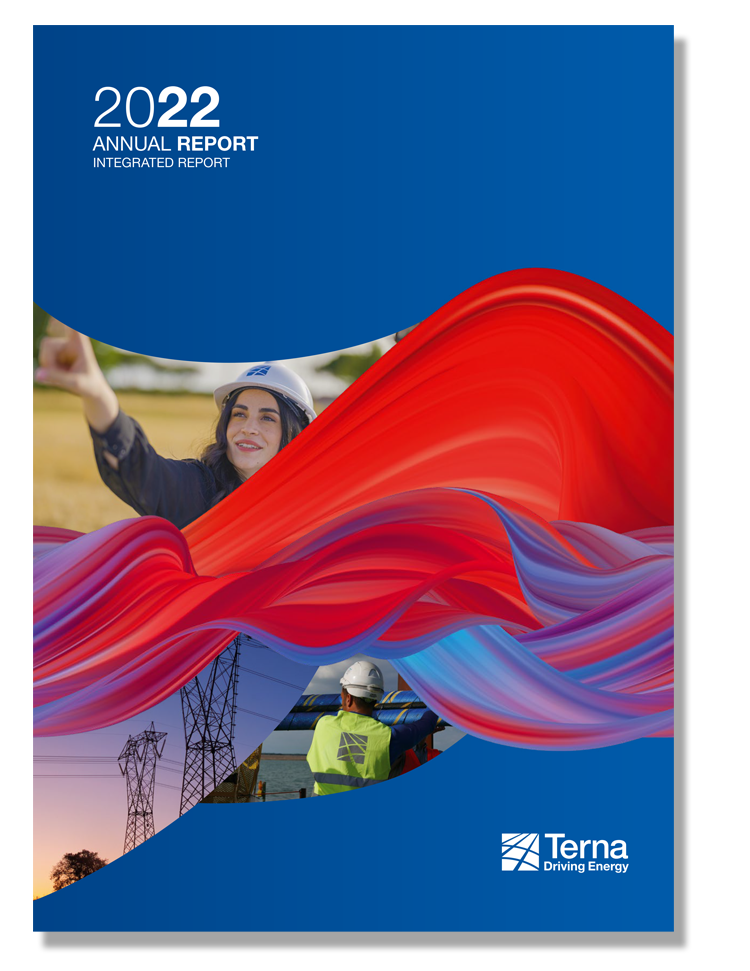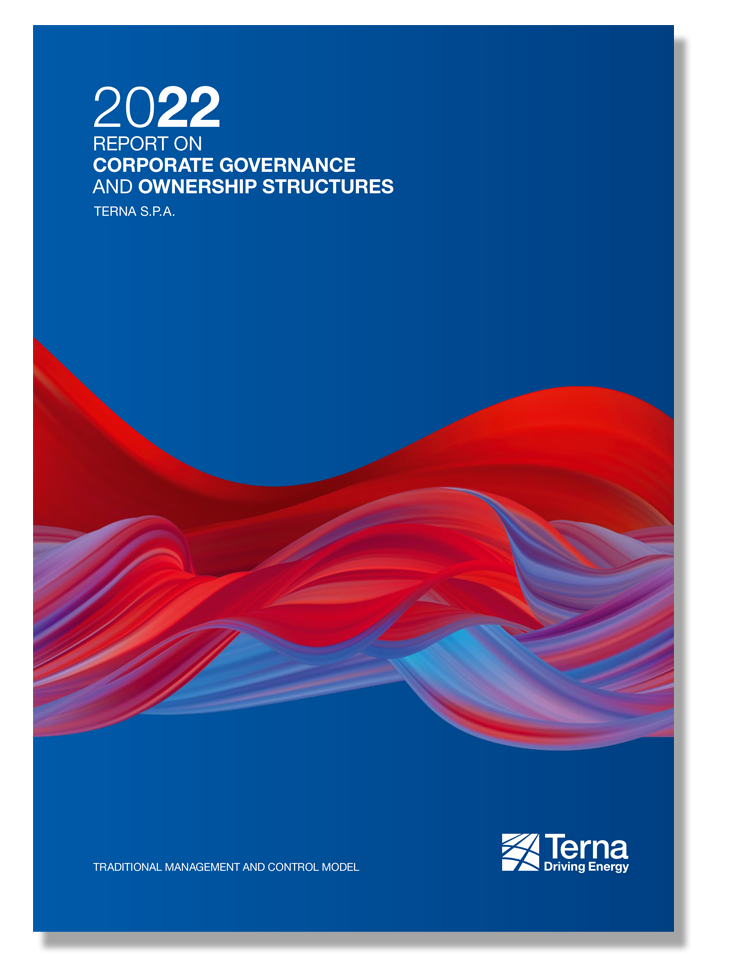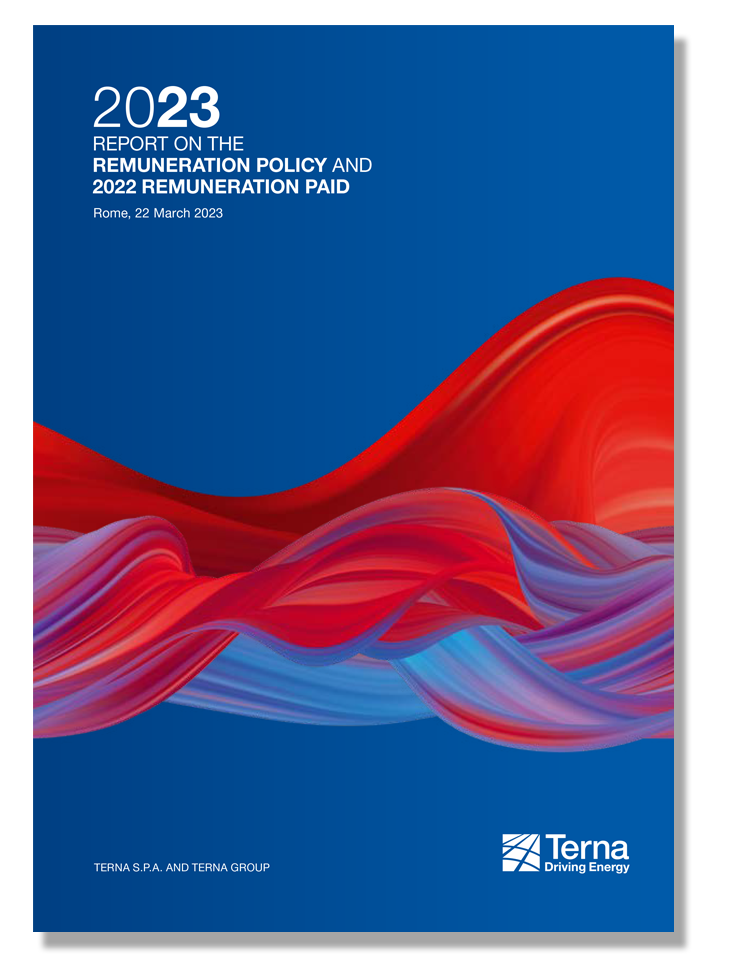



driving energy
We are Europe’s largest independent electricity transmission system operator.
We are engaged in driving and enabling the ecological transition in order to create a new development model based on renewable sources and respect for the environment.
Sustainability, innovation and distinctive competencies are behind everything we do, with the aim of providing the generations to come with a clean, accessible and emission-free energy future.
We have the major responsibility for providing the country with energy, ensuring security, quality and cost-effectiveness over time.
We manage Italy’s high-voltage electricity transmission grid, one of the most modern and technologically advanced in Europe, which we are working to develop and integrate with the European grid , guaranteeing secure and equal access to all grid users.
We are developing Non-regulated Activities and new business opportunities, making our expertise and experience available in Italy and overseas.
LETTER TO STAKEHOLDER
2022 proved to be an extremely challenging year. The tragic events in Ukraine provoked a further rise in commodity prices, fuelling inflation and, for the first time in decades, raising doubts about the very concept of energy security in Italy.
The war in Ukraine and the resulting global energy crisis have thus meant that Italy was faced with the inescapable need to commit to reducing as far as possible the country’s dependence on fossil fuels and increasing national energy security, in line with the European Union’s decarbonisation targets. Terna has thus stepped up its commitment to delivering for the country and its people, in keeping with our role in driving the energy transition. Our goal is to guarantee a more sustainable, efficient high and very high voltage national transmission grid, capable of maximising the integration of energy produced from renewable sources such as sun and wind, both of which Italy has in abundance.
Despite the difficult backdrop, thanks to the commitment shown by the over 5,400 people who work for the Company, Terna recorded improvements across all its financial performance measures, including a major increase in investment in our core business of electricity infrastructure. As a result, 2022 saw us obtain consents for 29 development projects for the national transmission grid with a value of over €2.5 billion: more than double the record amount of 2021 and almost ten times the amount for 2020.
In March, we updated the Driving Energy Industrial Plan for the period 2021-2025, further accelerating investment, which is now due to total €10 billion over the five years. During the year, we also made significant progress towards completing the most important of the projects planned by Terna, the Tyrrhenian Link. In September, we received the go-ahead to start work on the ‘East Section’ of the submarine connection between Campania and Sicily, whilst also formally starting the process of obtaining consent for the ‘West Section’ linking Sicily with Sardinia. 50% of the total cost of this infrastructure, which is of strategic importance for Italy’s electricity system, is covered by a loan obtained from the European Investment Bank in November
Other work on the upgrade and development of the national transmission grid also proceeded according to plan: these are all essential works that will enable Italy to achieve the goals set at European and national level. These include the restructuring of the electricity grid in various metropolitan areas around the country, the start-up of work on the Colunga-Calenzano backbone between Emilia-Romagna and Tuscany and modernisation of the high-voltage grid in the locations due to host the Winter Olympics in 2026.
Cross-border interconnections play an equally important role, optimising exchange capacity and enabling Italy and neighbouring countries to come to each other’s assistance when needed. By virtue of its geographical position, Italy has the potential to become the electricity hub for Europe and the Mediterranean area. For this reason, we plan to deliver new cross-border power lines in addition to the 26 already in operation. Among the new connections, we have formally begun the consents process for the submarine connection that will link Sicily and Tunisia. This is a strategic project and has, of itself, already set a historical precedent, given that it is being part financed by the European Union and this is the first time that EU funds are being used to finance infrastructure developed by a member state and by a state that does not belong to the European Union
As well as being crucial for decarbonisation, development of the power grid confirms the strength of Terna’s commitment to a just energy transition, which puts sustainability at the heart of the value creation process, bringing benefits for the Company, the wider system and the environment. In fact, 99% of the projects that we have included in the updated Industrial Plan qualify as sustainable in nature based on the eligibility criteria in the EU Taxonomy. For us, being sustainable means adopting an approach that ensures that the electricity infrastructure we build is well integrated into the surrounding environment and is the result of continuous engagement and dialogue with local communities and the bodies and authorities that represent them. This is why we have set a world first by adopting the evaluation criteria in the Envision protocol, which measures and certifies how green and resilient projects are. Our sustainability strategy, which remains tied to the 10 Global Compact principles that we have applied since 2009, takes into account all ESG aspects, an essential requirement if we are indeed to deliver a just transition. This is an ongoing commitment involving many aspects of our business, from defending the environment to circular economy initiatives and conversion of the Company’s vehicle fleet to electric, from gaining the benefits of inclusion to safeguarding diversity and preventing all forms of discrimination. Our leadership in sustainability has been acknowledged by the main ESG rating agencies, who have confirmed Terna’s inclusion in the leading sustainability indices and its rating as a top performer: notably, in S&P Global’s Corporate Sustainability Assessment 2022, Terna was the highest ranked among the 250 electric utilities rated.
Our people, who are of fundamental importance to Terna, have been involved in the continued rollout of new ways of working. This focuses on the digitalisation of corporate processes and sustainability with a view to delivering greater efficiency and productivity, logistical benefits and an improved worklife balance. We have developed sustainable mobility projects for our people, and innovative training initiatives such as the Terna Academy research hub, created to strengthen and enhance the distinctive competencies possessed by the members of Terna’s workforce and key to delivering a sustainable, zero-carbon future. We have laid the foundations for responding to the growing complexity of the grid of the future, which will be managed with ever greater efficiency with the aid of technology and, above all, the new technical and digital skills that we aim to develop by launching the Tyrrhenian Lab. We have invested €100 million over 5 years in a centre of training excellence, distributed in the three cities where the submarine cables forming the Tyrrhenian Link will make landfall. In doing this, we aim to train people for the new roles that will drive the acceleration of the energy transition process.
In the coming years, innovation, new technologies and digitalisation will continue to play a key, increasingly central role in the management of energy infrastructure, the main enabling factor for the energy transition. In this regard, the above update of the Industrial Plan has also boosted investment in technology and digital, allocating approximately €1.2 billion for this purpose out of the total amount of €10 billion. This acceleration of innovation also saw Terna take its first steps, in December, in the world of corporate venture capital via the establishment of Terna Forward, a new Group company set up with the aim of investing in start-ups and small, medium and large enterprises with high innovation and technological potential. In addition, after the success of the first edition, we have launched the second edition of the corporate entrepreneurship programme, Terna Ideas, in which sustainability, confirming its crucial role in our business, has become one of the key criteria in the proposition and assessment of innovative ideas. Internationally, we have concentrated on strengthening collaboration with leading universities in the United States to drive research and development in the field of innovative solutions for the future of the electricity sector. This forms part of a more general strategy of strengthening our international presence in a market with attractive growth potential, such as the USA.
Finally, we launched the Driving Energy Contemporary Photography Prize with the aim of supporting and promoting the country’s cultural development through a competition open to all photographers in Italy. This represented a further contribution to development of the local areas and communities in which we operate.
The extremely satisfying results we have achieved during a difficult and challenging year are down to the excellence of our people. Terna’s leadership and its strategic role - ever more widely acknowledged by the country and its people – are founded on their professionalism and expertise. Our people have played a decisive part in achieving the Group’s objectives so far and will play an even bigger role in the coming years, as we drive Italy towards the transition and energy independence and generate value for the Company and all its stakeholders.
driving energy
Terna's role in the just transition
The electricity system is made up of several segments: production, transmission, distribution and the sale of electricity. Tasked with transmission and dispatching, Terna is responsible for the key transmission segment. As Transmission System Operator (TSO), Terna must on the one hand design a grid capable of handling the progressive decarbonisation of the sources of production and the growing integration of renewables (transmission operator), whilst on the other guaranteeing that, at all times, energy demand from consumers is always balanced by the amount produced through socalled “dispatching” (system operator).
This is a complex task, requiring an independent central coordinator capable of having an overall view of a high number of actors involved in both production and consumption. This is why Terna refers to itself as driving the energy transition towards a new decarbonised model.
Terna is aware of the fact that the goal of decarbonisation must be addressed by taking into account not only the environmental aspects, but also the social dimension in order to deliver a just transition that is as fair and inclusive as possible. In this sense, a multistakeholder approach, involving all the players that have an impact on and are impacted by the transition is of fundamental importance. The process must therefore include, for example, trade bodies, civil society and stakeholders through partnerships, roundtable discussion and engagement initiatives.
The transition to a distributed production system based on renewable sources is rapidly altering the market, resulting in exponential growth in active resources connected to the grid. Managing requests for connection to the HV grid, coming from entities proposing renewable initiatives, enables Terna to have a systematic view of the current situation and future scenarios. In this way, the TSO can monitor the system’s ability to meet demand for electricity whilst satisfying security and quality of service requirements, in a word, ensuring the system’s “adequacy”.
An extremely complex challenge. Terna plays a central role in this energy transition, both in enabling the electricity system’s transition towards renewable sources and in coordinating this transformation process. The electricity grid is the main enabling factor in achieving the global goal of decarbonisation.
an overview of 2022
an overview of 2022(€m)
The first two transaction closings for the sale of all the Terna Group’s electricity transmission assets in South America to CDPQ, regarding the first three projects in Brazil and the project in Uruguay, for a price of over €172 million.
took place on 7 November and 22 December 2022. This was in execution of the preliminary agreement, signed on 29 April, for the sale of all the Group’s power transmission assets in Brazil, Peru and Uruguay for a total of over €265 million.
electric system
Performance well below the targets set by ARERA
* Provisional data
capital
capital
capital
capital
relationship capital
capital
strategy and creation of value
capitals
SUSTAINABLE FINANCE
DOWNLOAD THE 2022 GREEN BOND REPORT




























